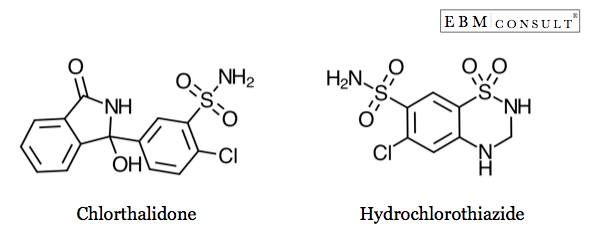Differences in Chlorthalidone's Mechanism of Action vs Hydrochlorothiazide and Its Clinical Relevance
Summary:
-
Hydrochlorothiazide is the more commonly prescribed thiazide diuretic, but chlorthalidone may have greater benefits.
-
Chlorthalidone is more potent and exhibits both a longer duration of action and elimination half-life compared to hydrochlorothiazide.
-
It is hypothesized that the greater inhibition of carbonic anhydrase associated with chlorthalidone is the reason for possible improved cardiovascular benefits.
- Studies have found chlorthalidone to provide greater blood pressure lowering effects over a 24-hour period. Some trials associate chlorthalidone with greater cardiovascular event reduction outcomes, but not in the older patient population.
-
Overall, both agents have a similar drug interaction and adverse drug reaction profile.
-
Additional head-to-head evaluations are needed to determine the difference in cardiovascular benefits and risk of hypokalemia between hydrochlorothiazide and chlorthalidone.
Author: Carolyn J. Steber, PharmD
Editor: Anthony J. Busti, MD, PharmD, MSc, FNLA, FAHA
Content Editors: Donald S. Nuzum, PharmD, BCACP, BC-ADM, CDE, CPP and Sabrina W. Cole, PharmD, BCPS
Explanation
|
|---|
Lecture: Drug Class Review
|
|---|
|
|
MESH Terms & Keywords
|
|---|
|


